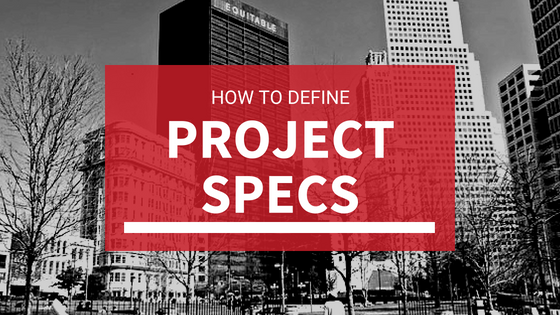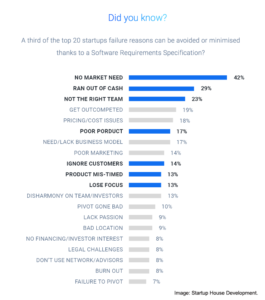
If you have been following along on our MVP series, you already have better knowledge of hypothesis and customer discovery. After you’ve been through those tests you’ll be left with better information about your idea, who’s your consumer and what you’ll need to alter to have better chances of being successful. It is only natural now that we talk about project specs and how to really organize your project so that not only you but everyone involved in it can understand it.
What is a Project Spec?
To put it very simply, a Project Specification, or spec, is a thorough description of objectives for a project. It contains all the details and goals necessary for a team to bring a vision to life. Think of it as a blueprint of your project.
The reason why this is such an important step in the process is that it forces you to organize the project and to really think of its needs. For example, let’s say you’re building an app that helps flight crew know and organize their schedule, such as iCrew, and you want to know how much it’ll cost you. Well, unless you know the full scope, functionality, and timeline of the project, you won’t be able to get an estimate. The bottom line is: if you know and prep for all the details you’re less likely to surpass your budget or to loose control of the process.
If you’re still not convinced, here’s a list of the top 20 startup failures that can be avoided by the use of a project spec:
Prototype X Product
Now, because a project has to culminate in a result – most likely a product of some sort (website, app, program, etc) -, it is important to understand the difference between product and prototype.
A prototype is a preliminary form of something from which other forms are developed or copied. They have a very narrow purpose and showcase the anticipated product. A product on the other hand is the finished version which actual customers will spend their money on. With a prototype, you as the creator can curate the experience, but when it has evolved into a product you lose control. What’s tricky is that founders will usually think of their products as prototypes (there’s always room for improvement), but users and consumers don’t.
It’s simple, think of Apple products. If you just bought the iPhone X, you bought it because you wanted the latest release of technology. You didn’t buy it thinking this is the prototype for the real thing – even if you know that in a year’s time there will be something new. You spent your money because you expect the phone to function perfectly, not because you want to test it out and give them feedback.
This is how you know: If your consumer is spending money on it, it’s a product.
Composition of a Project Spec
What is in and how long your project spec is will vary according to what kind and how intricate the project is. However, there are a few common elements that make up most project specs:
- Introduction
- Project Goals and Objectives
- Product/Service Description
- Design Specifications
- Success Criteria
- Marketing Plan
- Project Timeline
- Budget
It’s important to remember that even though this is a blueprint for your project, it is NOT a rigid document. As you go through the different phases of your projects lots will change and so will you Project Spec. Keep it updated and on its tracks.
If you don’t want to create your spec on just a simple Word document, there are plenty of software and application options available online, some of which will guide you through your specific project needs. If you’re looking for an MVP spec tool, Black Design developed one that’s user friendly and you can find it here.
What projects are you building? Have you put together a spec? Do you have a go-to software or platform for it? Let me know in the comments below!




